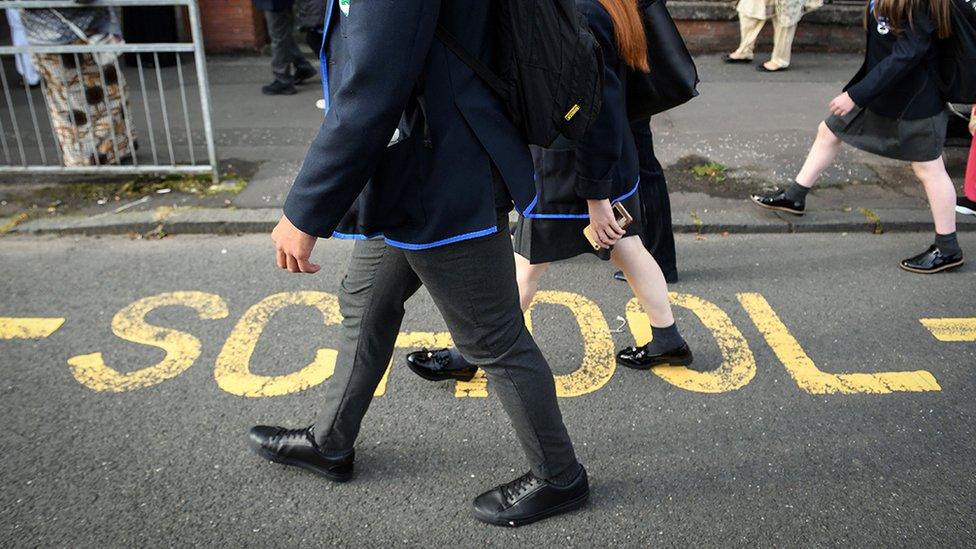Covid in Scotland: Levels to be reviewed
- Published

A decision is expected to be announced on Friday about whether the Covid restriction levels in Glasgow, East Renfrewshire and Moray will change.
Glasgow is currently in level three, with the Scottish government expected to announce whether it can move down to level two.
The city's infection rate has been accelerating, so it could remain in level three.
It may be joined by East Renfrewshire, where case numbers are also on the up.
East Renfrewshire only moved down to level two on Monday, as restrictions across much of the country were eased.
Prof Devi Sridhar told BBC Radio's Good Morning Scotland programme: "We should remember that it's data that should be driving this, not dates.
"And while it is painful to move backwards, what we've seen, for example in Moray, is that actually early action in holding it brought the numbers down so they can be released earlier."
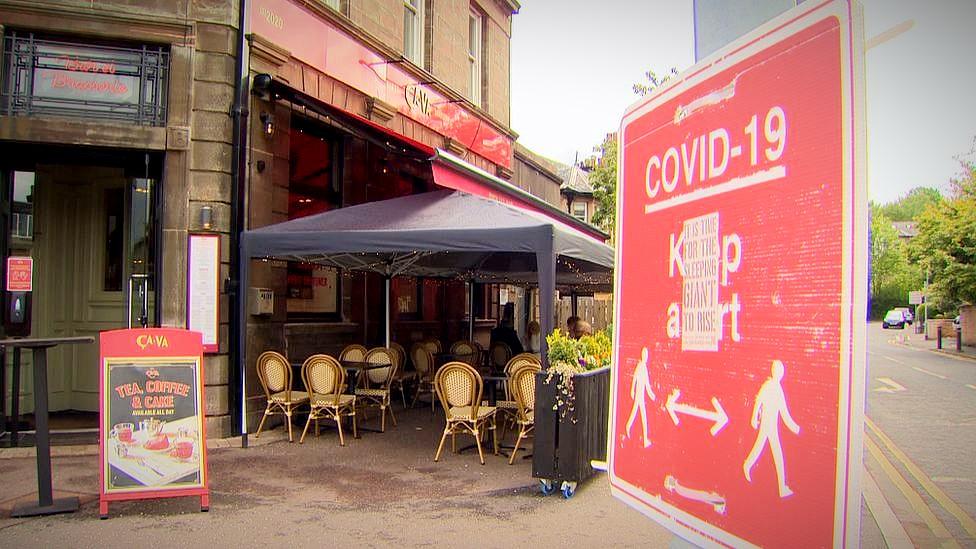
East Renfrewshire moved into level two this week, allowing hospitality venues to serve alcohol inside until 22:30
Her University of Edinburgh colleague, Prof Linda Bauld, expects Moray to drop to level two, Glasgow to remain at level three and said there was a "real possibility" East Renfrewshire will move up to level three.
She also told the programme she was concerned about current levels in Clackmannanshire, East Dunbartonshire, Midlothian, North Lanarkshire and Fife.
Earlier this week, with the exception of Glasgow and Moray, mainland Scotland moved to level two. Most of the islands moved to level one.
Moray had been kept in level three over concerns about its infection rate, and surge testing was brought in as the vaccination roll-out was widened to include younger adults.
The infection rate in the area is now decelerating, leading to speculation it may be allowed to move into level two.
According to official statistics, external published on Thursday, the weekly case rate in Moray had fallen to 36.5 per 100,000.
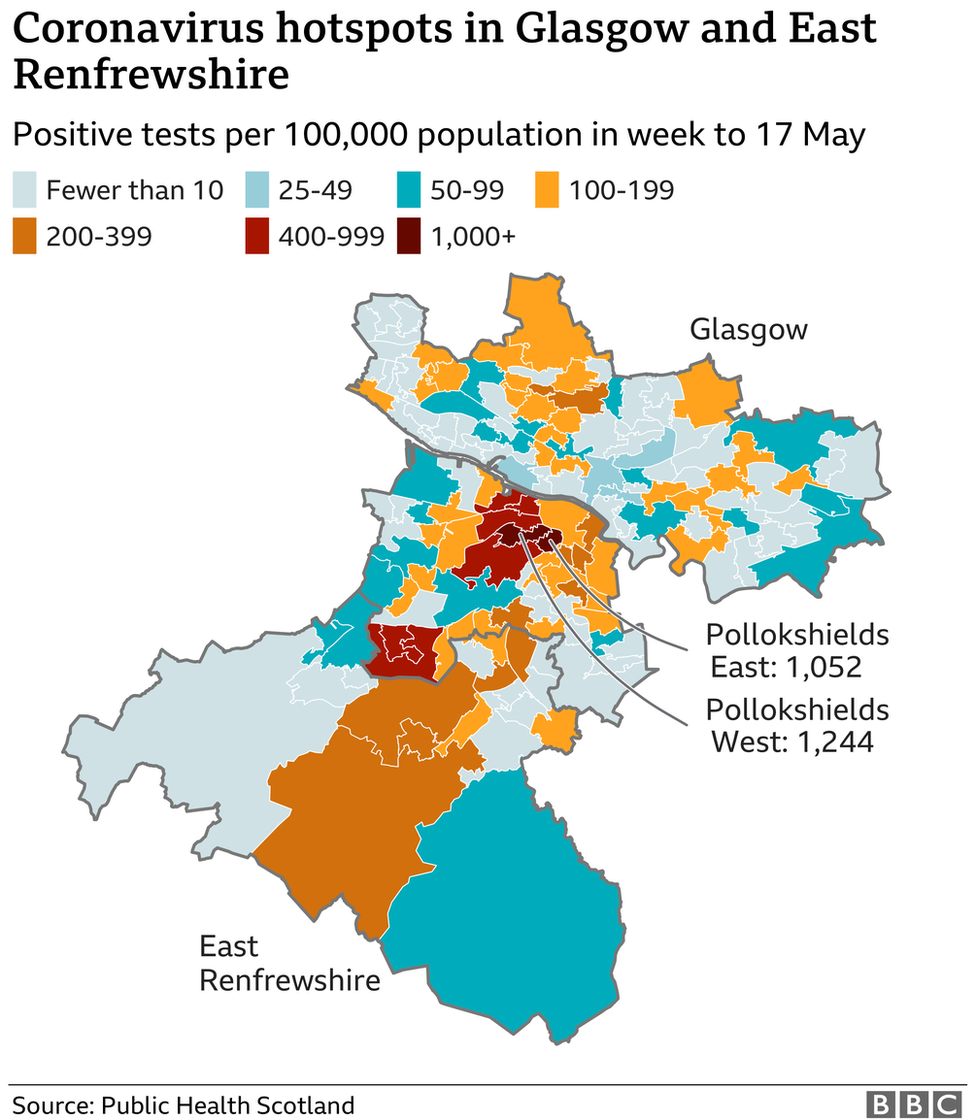

In East Renfrewshire it had reached 118.3 by 17 May - meaning the infection rate had overtaken Glasgow's, which was 112.1 cases per 100,000 people.
Glasgow's outbreak is concentrated in the south side of the city, where levels of infection appear to be much higher.
Covid cases across Scotland have been rising over the last few weeks, with fears the surge in Glasgow is being driven by the Indian variant.
The strain is thought to spread more easily than the Kent variant that caused the winter spike in infections, and has been found in pockets across the UK.


This will be the first coronavirus briefing since the new cabinet was revealed, with the first minister being accompanied by her new health secretary, Humza Yousaf.
The decisions for today are not as stark or difficult as some that have been taken in St Andrew's House - but they are uncomfortable.
The situation in Glasgow is improving - but it's likely the city will be held at level three. We might be told this is for another week before the next review, but realistically this situation may last for another two or three weeks.
The decision for Moray is fairly easy. People there hope to be placed in level two as the situation improves, and that looks likely.
The toughest one is East Renfrewshire. The case rate is high (118 per 100,000) but the small council area means the actual case numbers are relatively low, as Professor Linda Bauld pointed out this morning.
If they do go back up to level three, remember the area only entered level two on Monday. It's this yo-yo effect that ministers wanted to avoid.
What happens here will be a significant decision. It sets the precedent for what might happen around Scotland as we start to live with the disease as the vaccination programme progresses.

What's allowed in different Covid levels?
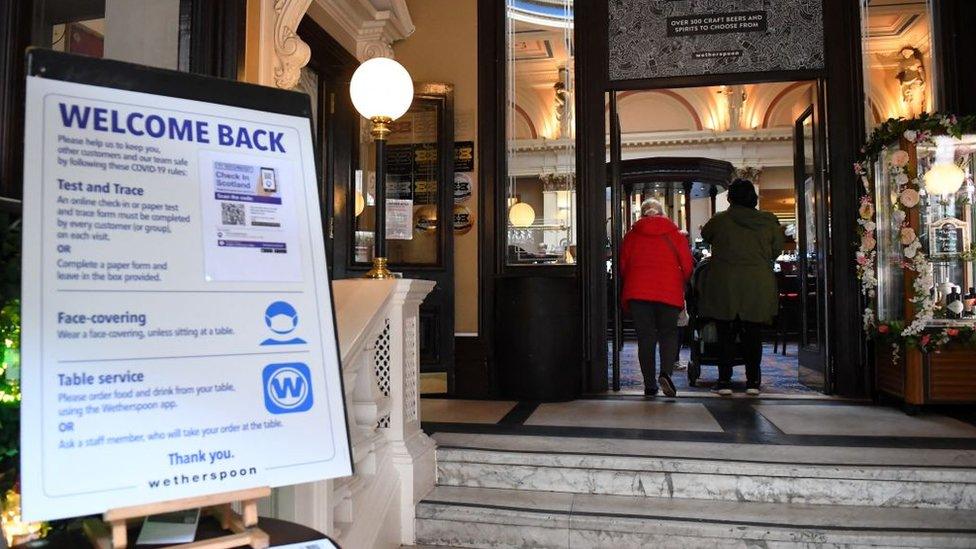
Under level three restrictions, groups of six people from two households can meet in cafés, pubs and restaurants. However, alcohol can only be served outdoors.
And six people from six households can meet outside. But, you cannot visit people in their homes.
Under level two restrictions, which East Renfrewshire is currently in, pubs and restaurants are allowed to serve alcohol inside until 22:30, and limited numbers of people can socialise indoors.
Social distancing during meetings indoors or in private gardens is no longer required in levels one and two.
Cinemas, theatres, concert halls, music venues, comedy clubs and bingo halls can reopen with restrictions.

The infection rate is a key indicator of which restriction level an area should be in, with upwards of 50 cases per 100,000 seen as a threshold for level three.
The weekly case rate is one factor that will be considered, but others include the ability of the local NHS to cope.
Scotland's national clinical director said a decision was yet to be made on what would happen to Glasgow and East Renfrewshire.
Prof Jason Leitch said public health officials would give First Minister Nicola Sturgeon further advice on Friday morning, before a cabinet meeting where a final decision would be made.
It will be followed by a Scottish government briefing, which will be broadcast live at 12:15.

Prof Leitch said: "Glasgow continues to accelerate, East Renfrewshire continues to accelerate - but they are slightly different pandemics, as is Moray. Moray is decelerating.
"Glasgow... you could say is beginning to slow, the acceleration is beginning to slow - but certainly not out of the woods. And that means... everybody who lives here has to follow the rules... and we can hopefully turn a corner."
Questioned about why businesses were still operating under restrictions, Prof Leitch told Radio Scotland that experts could not be sure where transmission was happening. The only thing that could be said for certain was that it was transmitted when people mixed.
"When you decide you're going to restrict, we have to make that judgement somewhere. Level three does allow a lot of relaxation. A lot more people meeting indoors and out.
"Level two is a massive because it allows people in each others' homes, and that's why we're nervous about it."


There are difficult decisions to be made by government ministers on restrictions. A wide variety of factors will help them to decide.
Weekly case rates per 100,000 of the population are an important measure. But in areas with lower populations you will see bigger fluctuations. A small rise in cases linked to a known source, like a school or a factory, could push that figure up quite rapidly.
The percentage of tests that come back positive is also useful. The seven-day positivity rate for the whole of Scotland is 1.5%. In Glasgow city where there has been a huge expansion of testing, it is still only 4%. In East Renfrewshire, another area of concern, it is 4.1%.
One of the most important factors for officials to take into account is what is driving the infections. Can they identify sources and put in place measures? Or is there sustained community transmission? That was why Moray was held in level 3.
Geography, population density, community response will all be taken into account, as will the capacity of hospitals to cope with any rise in cases.
The biggest unknown at this time is what will happen to the new B1617.2 variant, first identified in India and believed to be behind the outbreak in Glasgow's Southside. Public health figures show that confirmed cases of this variant have gone from 35 to 136 in one week. Scientists say it is more infectious but just how much is not yet known.
The expectation is that vaccines will hold up but it's too early to say for sure.

LOCKDOWN RULES: What's changing and when?
GLOBAL SPREAD: How many worldwide cases are there?
CASE RATES: What's the latest in Scotland?
NEW VARIANTS: How worried should we be?

- Published20 May 2021
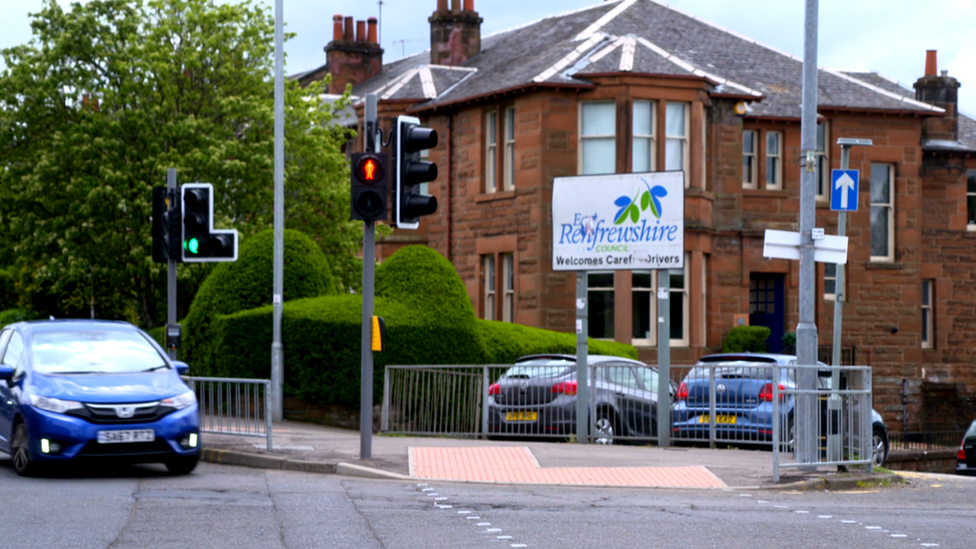
- Published20 May 2021
